Jun 15, 2017
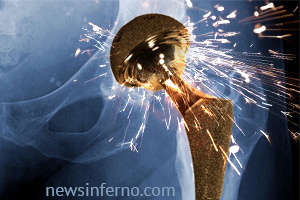 Many of our clients have no idea that BAL supports human diagnostic testing, specifically research related to patients that have undergone arthroplasty surgery (such as hip replacement). On May 9-10, one of our scientists, Russell Gerads, presented two invited lectures at the ASTM Symposium “Beyond the Implant: Retrieval Analysis Methods for Implant Surveillance” in Toronto: Characterization of Cobalt in Periprosthetic Tissues and Fluids: Toxicological and Clinical Importance of Standardizing Quality Analytical Methods for Differentiating Cobalt Partitioning at the Molecular Level and Total Elemental Analyses of Biological Fluids – Variables and Data Concerns. These presentations focused on the concerns regarding total cobalt and chromium in human biological fluids, as well as the patented BAL Reflexive Test to measure an individual’s inherent cobalt detoxification capacity before an arthroplasty surgery is even performed. Contact us today to identify how partnering with BAL can make both you and your team ready to tackle the complex challenges of the twenty-first century.
Many of our clients have no idea that BAL supports human diagnostic testing, specifically research related to patients that have undergone arthroplasty surgery (such as hip replacement). On May 9-10, one of our scientists, Russell Gerads, presented two invited lectures at the ASTM Symposium “Beyond the Implant: Retrieval Analysis Methods for Implant Surveillance” in Toronto: Characterization of Cobalt in Periprosthetic Tissues and Fluids: Toxicological and Clinical Importance of Standardizing Quality Analytical Methods for Differentiating Cobalt Partitioning at the Molecular Level and Total Elemental Analyses of Biological Fluids – Variables and Data Concerns. These presentations focused on the concerns regarding total cobalt and chromium in human biological fluids, as well as the patented BAL Reflexive Test to measure an individual’s inherent cobalt detoxification capacity before an arthroplasty surgery is even performed. Contact us today to identify how partnering with BAL can make both you and your team ready to tackle the complex challenges of the twenty-first century.
Jun 15, 2017
 Effectively managing risk is critical to the success of any business and any project. While the choice of analytical laboratory may be only one component of the overall risk associated with a given endeavor, it is an essential one because the data generated by the lab informs the decisions made throughout the project’s life cycle. Inaccurate or late data can lead to significant schedule and cost overruns, potentially jeopardizing the project. Partnering with Brooks Applied Labs (BAL) can help maximize your project’s chance of success because we understand the importance of meaningful, accurate, and timely data.
Effectively managing risk is critical to the success of any business and any project. While the choice of analytical laboratory may be only one component of the overall risk associated with a given endeavor, it is an essential one because the data generated by the lab informs the decisions made throughout the project’s life cycle. Inaccurate or late data can lead to significant schedule and cost overruns, potentially jeopardizing the project. Partnering with Brooks Applied Labs (BAL) can help maximize your project’s chance of success because we understand the importance of meaningful, accurate, and timely data.
Starting with the project’s inception, BAL’s experienced staff can provide recommendations on what analyses will provide meaningful results to support data-driven decisions. For some projects total elemental analyses may be sufficient, where more advanced speciation analyses may be required for others. Drawing on BAL’s decades of experience developing and implementing customized analytical procedures, we can work with you to ensure the data generated will address the goals of your investigation.
Once the appropriate analyses have been selected, BAL has the facilities and highly-skilled staff to execute the analytical plan. We have over ten inductively coupled plasma mass spectrometers (ICP-MS), including multiple triple quadrupole ICP-MSs, that provide state-of-the-art interference removal. Using this advanced instrumentation ensures that accurate data will be available for decision-making. Our redundant instrument capacity also means that we can handle projects of all sizes and required turnaround times, with little risk of unexpected delays.
Additionally, all data generated by BAL undergoes three levels of review – by the chemist performing the analysis, by our quality assurance group (100% review of all data points), and finally by the project manager who issues the report. These multiple reviews ensure that reported data is accurate and meets the requirements of both the analytical methods and the project-specific plan.
To learn more about how partnering with Brooks Applied Labs can help ensure the success of your project, please contact us today!
Jun 15, 2017
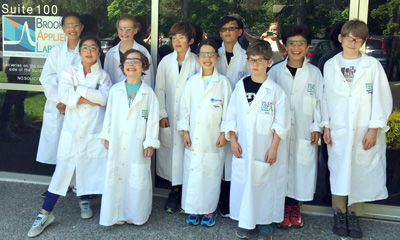 The BAL staff recently glimpsed the future during our 1st Annual Bring Your Kids to Work Day, when 10 children, ranging in age from 6 – 13, spent the day at BAL. The day began with collecting water samples at a nearby creek and their first lesson in “clean hands/dirty hands” sample collection. Back at the lab, they “received” their samples and preserved them (with vinegar). Pipettes were a huge hit! Over lunch, the kids were entertained with a presentation on why we do what we do at BAL. Then, it was time to suit up in their PPE for a tour of the lab. At the end of the day, when asked what their favorite activity at their parent’s work was, the consensus was trying to catch frogs in the creek while collecting samples!
The BAL staff recently glimpsed the future during our 1st Annual Bring Your Kids to Work Day, when 10 children, ranging in age from 6 – 13, spent the day at BAL. The day began with collecting water samples at a nearby creek and their first lesson in “clean hands/dirty hands” sample collection. Back at the lab, they “received” their samples and preserved them (with vinegar). Pipettes were a huge hit! Over lunch, the kids were entertained with a presentation on why we do what we do at BAL. Then, it was time to suit up in their PPE for a tour of the lab. At the end of the day, when asked what their favorite activity at their parent’s work was, the consensus was trying to catch frogs in the creek while collecting samples!
Jun 14, 2017
Did you know…food products containing nanoparticles require labeling in EU. Read the full article here.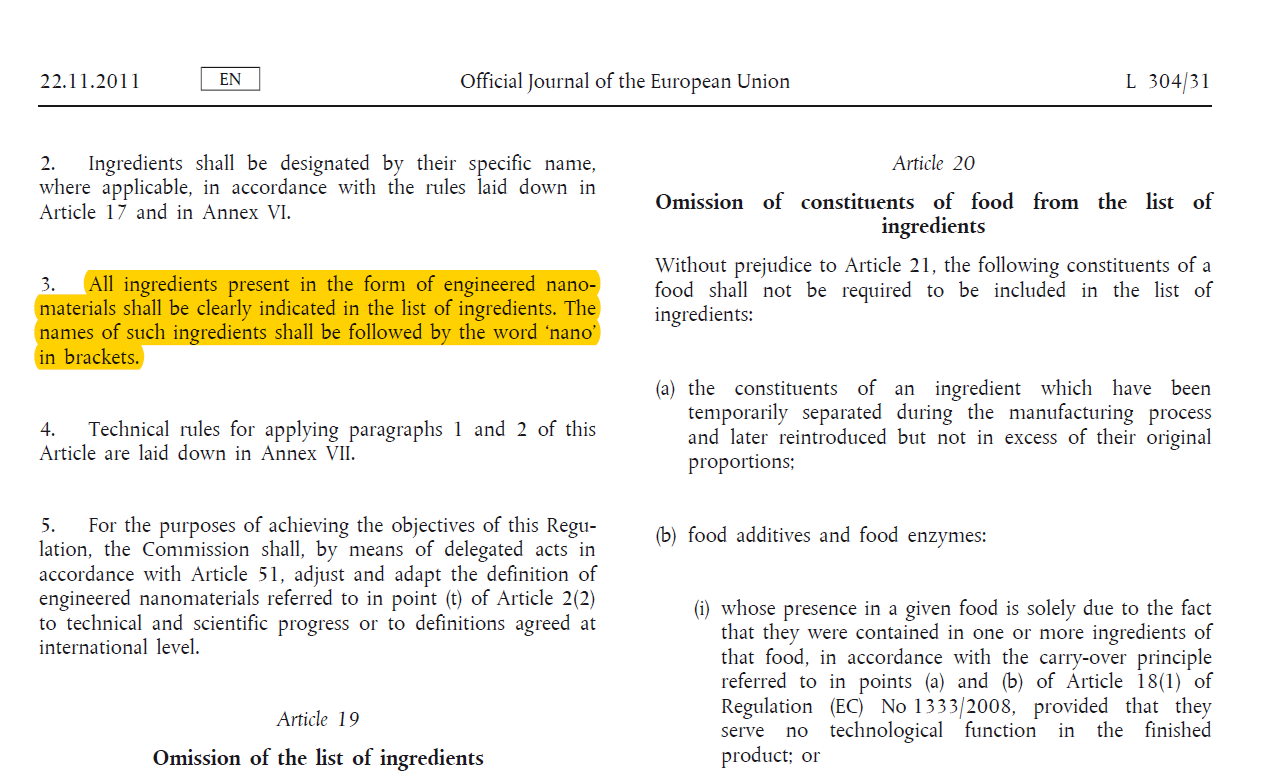
May 11, 2017
 If you follow our newsletters, you probably have noticed that BAL staff have had a busy winter and spring attending and presenting at many conferences around the country and even overseas. In case you missed any of the announcements or would like a copy of the presentations, here is a recap:
If you follow our newsletters, you probably have noticed that BAL staff have had a busy winter and spring attending and presenting at many conferences around the country and even overseas. In case you missed any of the announcements or would like a copy of the presentations, here is a recap:
In February, Jamie Fox, presented at the Energy, Utility & Environment Conference in San Diego on Wastewater Selenium Chemistry in Bioreactor Treatment Systems (contact Jamie for a copy of the presentation). Also in February, two of our scientists, Dr. Hakan Gürleyük and Tamas Ugrai, presented at the European Winter Conference on Plasma Spectrochemistry in Austria. Hakan spoke about the Determination of radium in natural waters using IC-ICP-MS after on-line preconcentration (contact us for a copy of the presentation), while Tamas presented on Reducing the risk of inaccurate results when quantifying trace elements in seawater using ICP-QQQ-MS.
In March, Elizabeth Madonick, presented a poster at the AEHS Foundation’s International Conference on Soil, Water, Energy, and Air in San Diego on Reducing the Risk of Inaccurate Results When Quantifying Trace Elements in Seawater.
And then last month, Jamie presented at the Department of Defense Environmental Monitoring and Data Quality Workshop in Phoenix on Advances in Detection of Hexavalent Chromium, while Michelle Briscoe presented the same week at the ACIL Policies and Practices Meeting in Washington, D.C. on Reducing the Risk of Staff Turnover: Developing Great Managers and Culture.
Stay tuned for future conference announcements and presentations through our newsletter. Hope to see you out on the road!
May 11, 2017
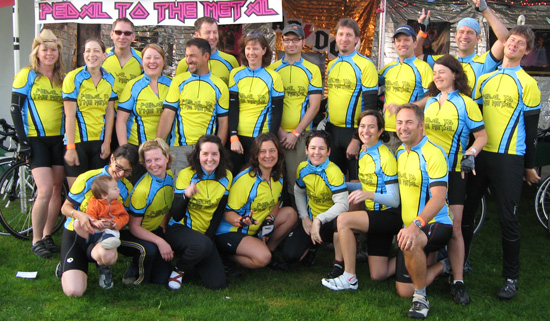 Since team Pedal to the Metal’s inception in 2004, Brooks Applied Labs (along with many of our friends) have participated in the annual Bike MS Deception Pass Classic charity bike ride to fund research that will support the estimated 2.5 million people world wide that have been diagnosed with Multiple sclerosis (MS). This unpredictable and often disabling disease of the central nervous system disrupts the flow of information within the brain, and between the brain and body. Research breakthroughs are driving new therapies at an amazing rate, and a world free of MS is closer to being a reality thanks to the funding that is generated by Bike MS ride. There are courses designed for all riding skill levels, so if you like cycling, here is your chance do something that matters and have a great time doing it! Don’t ride? There are also opportunities to come and volunteer at Joseph Whidbey State Park on the waterfront. Contact team captain Elizabeth Madonick or view our team page for more information.
Since team Pedal to the Metal’s inception in 2004, Brooks Applied Labs (along with many of our friends) have participated in the annual Bike MS Deception Pass Classic charity bike ride to fund research that will support the estimated 2.5 million people world wide that have been diagnosed with Multiple sclerosis (MS). This unpredictable and often disabling disease of the central nervous system disrupts the flow of information within the brain, and between the brain and body. Research breakthroughs are driving new therapies at an amazing rate, and a world free of MS is closer to being a reality thanks to the funding that is generated by Bike MS ride. There are courses designed for all riding skill levels, so if you like cycling, here is your chance do something that matters and have a great time doing it! Don’t ride? There are also opportunities to come and volunteer at Joseph Whidbey State Park on the waterfront. Contact team captain Elizabeth Madonick or view our team page for more information.
Apr 13, 2017
BAL: Solution Provider to the Mining Industry
 Throughout the history of Brooks Applied Labs, we have continually supported nearly all facets of the mining industry, from exploration to site remediation, across the US and Canada. Our experience and knowledge, coupled with some of the most technologically advanced analytical tools in use in environmental laboratories today, allow us to provide our clients with solutions to address their metals issues, not just unbiased results. BAL’s specialty in metals analysis and speciation, halogen quantification and speciation, as well as a full suite of cyanide analyses, is well matched to the needs of the mining industry. In addition to providing customized analytical services tailored to meet the complex project goals of our clients in the mining sector, BAL senior scientists often travel to visit the project sites, participating in planning and project development meetings to help optimize a project for success! Partnering with BAL is not only a function of risk management for mining companies, but can also be a boost in efficiency for investigative, processing, exploratory, and monitoring aspects. Contact us today to identify how partnering with Brooks Applied Labs can make both you and your team ready to tackle the complex challenges of the twenty-first century.
Throughout the history of Brooks Applied Labs, we have continually supported nearly all facets of the mining industry, from exploration to site remediation, across the US and Canada. Our experience and knowledge, coupled with some of the most technologically advanced analytical tools in use in environmental laboratories today, allow us to provide our clients with solutions to address their metals issues, not just unbiased results. BAL’s specialty in metals analysis and speciation, halogen quantification and speciation, as well as a full suite of cyanide analyses, is well matched to the needs of the mining industry. In addition to providing customized analytical services tailored to meet the complex project goals of our clients in the mining sector, BAL senior scientists often travel to visit the project sites, participating in planning and project development meetings to help optimize a project for success! Partnering with BAL is not only a function of risk management for mining companies, but can also be a boost in efficiency for investigative, processing, exploratory, and monitoring aspects. Contact us today to identify how partnering with Brooks Applied Labs can make both you and your team ready to tackle the complex challenges of the twenty-first century.
Apr 13, 2017
Brooks Applied Labs is Back On the Road Again!
DoD EMDQ Workshop

BAL’s Technical Sales Manager,
Jamie Fox, is headed back to Phoenix again to present at the 2017 Department of Defense Environmental Monitoring and Data Quality Workshop. This annual conference will be held April 18 – 20 at the U.S. Bureau of Land Management National Training Center and covers a number of data quality and analytical chemistry topics that center on the DoD Environmental Laboratory Accreditation Program (ELAP). Jamie will be presenting during the
Emerging Contaminants session on “Advances in Detection of Hexavalent Chromium.” Brooks Applied Labs is accredited to DoD Quality Systems Manual V5.0 and compliant with V5.1, the latest version just released. Please
contact us for a copy of our DoD ELAP certification or if you would like to connect with Jamie in Phoenix.
ACIL P2 Meeting
 BAL’s President/CEO, Michelle Briscoe, will be attending the ACIL Policies and Practices (P2) Meeting in Arlington, Virginia, April 19 – 21. The P2 Conference is an annual event that includes a full day of industry and sector specific meetings on government relations topics and updates from key members of the major EPA programs (RCRA/SW-846, Clean Water Act, Safe Drinking Water, and Clean Air Act). In addition, a round-table discussion is on the agenda on the topic of Managing Laboratory Risk: Anticipating Speed Bumps to Prevent Catastrophes and Michelle will be presenting in this session on the topic of “Reducing the Risk of Staff Turnover: Developing Great Managers and Culture”. Please let us know if you would like to hear more or if you would like to connect with Michelle while she’s in the Washington, D.C. area.
BAL’s President/CEO, Michelle Briscoe, will be attending the ACIL Policies and Practices (P2) Meeting in Arlington, Virginia, April 19 – 21. The P2 Conference is an annual event that includes a full day of industry and sector specific meetings on government relations topics and updates from key members of the major EPA programs (RCRA/SW-846, Clean Water Act, Safe Drinking Water, and Clean Air Act). In addition, a round-table discussion is on the agenda on the topic of Managing Laboratory Risk: Anticipating Speed Bumps to Prevent Catastrophes and Michelle will be presenting in this session on the topic of “Reducing the Risk of Staff Turnover: Developing Great Managers and Culture”. Please let us know if you would like to hear more or if you would like to connect with Michelle while she’s in the Washington, D.C. area.
Mar 17, 2017
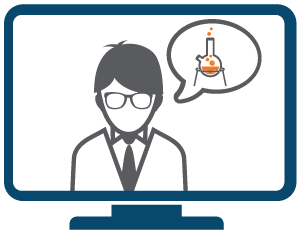 A little-known fact about the scientists at Brooks Applied Labs is that they present at scientific conferences throughout the year, continually perform research, and make concerted efforts to educate our clients and the community. The technical nature of the services we offer often requires a specialized education and experience to understand the results and properly apply them. BAL offers educational webinars to empower our clients with information associated with the chemistry of metals and metalloid compounds, as well as the benefits and limitations of various analytical techniques. Our webinars have a proven track record to increase industrial or remediation process efficiencies, mitigate risk (business and scientific), and expand our clients’ capacity to address complex problems involving metals chemistry. By expending an hour or two of time, your team can keep up-to-date on technological advances, which will allow you to have a competitive advantage.
A little-known fact about the scientists at Brooks Applied Labs is that they present at scientific conferences throughout the year, continually perform research, and make concerted efforts to educate our clients and the community. The technical nature of the services we offer often requires a specialized education and experience to understand the results and properly apply them. BAL offers educational webinars to empower our clients with information associated with the chemistry of metals and metalloid compounds, as well as the benefits and limitations of various analytical techniques. Our webinars have a proven track record to increase industrial or remediation process efficiencies, mitigate risk (business and scientific), and expand our clients’ capacity to address complex problems involving metals chemistry. By expending an hour or two of time, your team can keep up-to-date on technological advances, which will allow you to have a competitive advantage.
The webinars BAL offers are tailored to your needs. The expertise and focus of our scientists are applied to efficiently communicate information on the topics pertinent to your immediate or future scientific demands. Often times, complex scientific concepts are difficult to understand and even more difficult to communicate. The sheer number of webinars and scientific presentations that our scientists have given has resulted in an increased capacity to translate those complex scientific concepts into language that everyone can understand. We have produced and presented webinars for a wide range of markets, including: pharmaceuticals, wastewater treatment providers, government agencies, mining, environmental consulting companies, power generation, forensics, and food processing.
Let our team support your team and you will see a notable difference in how your company can address more complex issues associated with metals chemistry. If the nature of your needs are more sensitive, we can also support on-site seminars; however, we often recommend webinars to maximize the size of the audience for firms that have multiple locations throughout North America and the world. Contact us today to identify how partnering with Brooks Applied Labs can make both you and your team ready to tackle the challenges of the twenty-first century.
Mar 17, 2017
March is a busy month for the BAL Road Warriors!
 The AEHS Foundation’s International Conference on Soil, Water, Energy, and Air (AEHS Conference), held March 20-23 in San Diego, brings together environmental professionals to exchange information related to environmental issues. If you will be attending, be sure to catch the presentation by BAL’s Elizabeth Madonick on the 22nd on the topic of Reducing the Risk of Inaccurate Results When Quantifying Trace Elements in Seawater.
The AEHS Foundation’s International Conference on Soil, Water, Energy, and Air (AEHS Conference), held March 20-23 in San Diego, brings together environmental professionals to exchange information related to environmental issues. If you will be attending, be sure to catch the presentation by BAL’s Elizabeth Madonick on the 22nd on the topic of Reducing the Risk of Inaccurate Results When Quantifying Trace Elements in Seawater.
 March 21-23, BAL’s Jamie Fox will be attending Interphex, a conference in Manhattan that draws industry professionals from the pharmaceutical, biotechnology, and medical device development and manufacturing sectors.
March 21-23, BAL’s Jamie Fox will be attending Interphex, a conference in Manhattan that draws industry professionals from the pharmaceutical, biotechnology, and medical device development and manufacturing sectors.
 The Environmental Industry Summit will be held March 22-24 in San Diego. Senior executives, CEO Michelle Briscoe and VP of Operations Annie Carter, will be representing BAL (a past Business Achievement Award winner at this conference) at this unique event where environmental professionals from across the country converge for presentations and panel discussions on the state of the industry.
The Environmental Industry Summit will be held March 22-24 in San Diego. Senior executives, CEO Michelle Briscoe and VP of Operations Annie Carter, will be representing BAL (a past Business Achievement Award winner at this conference) at this unique event where environmental professionals from across the country converge for presentations and panel discussions on the state of the industry.
 Many of our clients have no idea that BAL supports human diagnostic testing, specifically research related to patients that have undergone arthroplasty surgery (such as hip replacement). On May 9-10, one of our scientists, Russell Gerads, presented two invited lectures at the ASTM Symposium “Beyond the Implant: Retrieval Analysis Methods for Implant Surveillance” in Toronto: Characterization of Cobalt in Periprosthetic Tissues and Fluids: Toxicological and Clinical Importance of Standardizing Quality Analytical Methods for Differentiating Cobalt Partitioning at the Molecular Level and Total Elemental Analyses of Biological Fluids – Variables and Data Concerns. These presentations focused on the concerns regarding total cobalt and chromium in human biological fluids, as well as the patented BAL Reflexive Test to measure an individual’s inherent cobalt detoxification capacity before an arthroplasty surgery is even performed. Contact us today to identify how partnering with BAL can make both you and your team ready to tackle the complex challenges of the twenty-first century.
Many of our clients have no idea that BAL supports human diagnostic testing, specifically research related to patients that have undergone arthroplasty surgery (such as hip replacement). On May 9-10, one of our scientists, Russell Gerads, presented two invited lectures at the ASTM Symposium “Beyond the Implant: Retrieval Analysis Methods for Implant Surveillance” in Toronto: Characterization of Cobalt in Periprosthetic Tissues and Fluids: Toxicological and Clinical Importance of Standardizing Quality Analytical Methods for Differentiating Cobalt Partitioning at the Molecular Level and Total Elemental Analyses of Biological Fluids – Variables and Data Concerns. These presentations focused on the concerns regarding total cobalt and chromium in human biological fluids, as well as the patented BAL Reflexive Test to measure an individual’s inherent cobalt detoxification capacity before an arthroplasty surgery is even performed. Contact us today to identify how partnering with BAL can make both you and your team ready to tackle the complex challenges of the twenty-first century.
 Effectively managing risk is critical to the success of any business and any project. While the choice of analytical laboratory may be only one component of the overall risk associated with a given endeavor, it is an essential one because the data generated by the lab informs the decisions made throughout the project’s life cycle. Inaccurate or late data can lead to significant schedule and cost overruns, potentially jeopardizing the project. Partnering with Brooks Applied Labs (BAL) can help maximize your project’s chance of success because we understand the importance of meaningful, accurate, and timely data.
Effectively managing risk is critical to the success of any business and any project. While the choice of analytical laboratory may be only one component of the overall risk associated with a given endeavor, it is an essential one because the data generated by the lab informs the decisions made throughout the project’s life cycle. Inaccurate or late data can lead to significant schedule and cost overruns, potentially jeopardizing the project. Partnering with Brooks Applied Labs (BAL) can help maximize your project’s chance of success because we understand the importance of meaningful, accurate, and timely data. The BAL staff recently glimpsed the future during our 1st Annual Bring Your Kids to Work Day, when 10 children, ranging in age from 6 – 13, spent the day at BAL. The day began with collecting water samples at a nearby creek and their first lesson in “
The BAL staff recently glimpsed the future during our 1st Annual Bring Your Kids to Work Day, when 10 children, ranging in age from 6 – 13, spent the day at BAL. The day began with collecting water samples at a nearby creek and their first lesson in “
 If you follow our newsletters, you probably have noticed that BAL staff have had a busy winter and spring attending and presenting at many conferences around the country and even overseas. In case you missed any of the announcements or would like a copy of the presentations, here is a recap:
If you follow our newsletters, you probably have noticed that BAL staff have had a busy winter and spring attending and presenting at many conferences around the country and even overseas. In case you missed any of the announcements or would like a copy of the presentations, here is a recap:

 BAL’s Technical Sales Manager,
BAL’s Technical Sales Manager,  A little-known fact about the scientists at Brooks Applied Labs is that they present at scientific conferences throughout the year, continually perform research, and make concerted efforts to educate our clients and the community. The technical nature of the services we offer often requires a specialized education and experience to understand the results and properly apply them. BAL offers educational webinars to empower our clients with information associated with the chemistry of metals and metalloid compounds, as well as the benefits and limitations of various analytical techniques. Our webinars have a proven track record to increase industrial or remediation process efficiencies, mitigate risk (business and scientific), and expand our clients’ capacity to address complex problems involving metals chemistry. By expending an hour or two of time, your team can keep up-to-date on technological advances, which will allow you to have a competitive advantage.
A little-known fact about the scientists at Brooks Applied Labs is that they present at scientific conferences throughout the year, continually perform research, and make concerted efforts to educate our clients and the community. The technical nature of the services we offer often requires a specialized education and experience to understand the results and properly apply them. BAL offers educational webinars to empower our clients with information associated with the chemistry of metals and metalloid compounds, as well as the benefits and limitations of various analytical techniques. Our webinars have a proven track record to increase industrial or remediation process efficiencies, mitigate risk (business and scientific), and expand our clients’ capacity to address complex problems involving metals chemistry. By expending an hour or two of time, your team can keep up-to-date on technological advances, which will allow you to have a competitive advantage. The AEHS Foundation’s International Conference on Soil, Water, Energy, and Air (
The AEHS Foundation’s International Conference on Soil, Water, Energy, and Air ( The
The